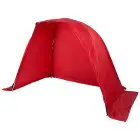This is a demo store. No orders will be fulfilled.
Sea Fishing Special - Beach Shelter Review
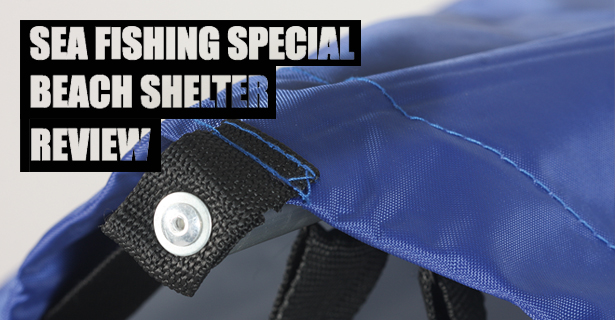

Beach Shelters A beach shelter tends to be one of the first things to come under consideration when shore anglers are trying to lighten their load. It’s true that some of them can be unwieldy to transport when a long hike is required, but it’s a fact that many anglers would rather not go fishing than be without a beach shelter.
While a shelter can provide protection from the elements on rough days, one is also useful on very hot days, providing much needed shade for anglers and especially bait. Cool boxes and the like function a lot better when kept out of direct sunlight, and if you’re keeping a few fish for the table then they’ll help keep them in good condition.
No matter what the weather, a beach shelter works brilliantly as a windshield. As we all know, the coast is a breezy place at the best of times, and tackling up, baiting rigs and putting new rigs together is much easier to do if you can get out of the wind to do it.
Using a shelter also puts you in a tidier frame of mind, and can reduce the chances of losing small items of tackle. As well as storing your tackle boxes, a shelter is a great place to keep things dry and a good focal point for any socialising.
Put simply, shelters represent shed culture on the shoreline!
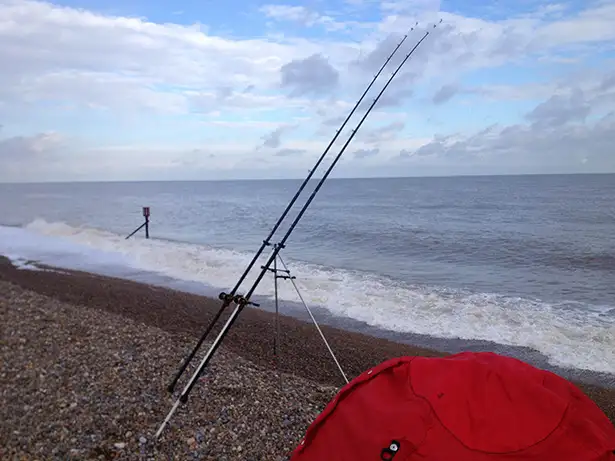
Size Matters Compared with the bivvies used by carp anglers, shore shelters are generally small and lightweight and have relatively compact ‘footprints’. However, there are some very substantial shelters on the market that do offer more space, but this inevitably comes at a cost in respect of extra weight and bigger size, even when folded down. Larger shelters are probably worth considering if you fish long sessions on particular beach marks regularly, whereas smaller, lighter shelters are ideal for shorter sessions.
What To Look For Shore fishing beach shelters shouldn’t be confused with standard beach or garden shelters that can typically be bought very cheaply. These simply won’t do the same job or be as durable as purpose-designed fishing shelters.
For shore fishing, shelters require generous ‘skirts’. These lie flat on the ground so that they can be covered by stones and shingle to prevent the shelter from being blown away. They also help prevent sand from being blown into the shelter. While some shelters offer pegging systems, these are best used in conjunction with skirts rather than as the main method of securing them.
Ups And Downs Apart from considerations of size and weight, it’s a fact that ease of putting up, taking down and packing away of shelters constitute important selection criteria. It’s always worth remembering that practice makes perfect, and the process does get easier with time. With this in mind it’s pretty much essential to have a few ‘dry runs’ in the back garden before taking one to the beach, especially if the first proper trip out coincides with windy weather.
We rated the following shelters based on straight-out-of-the-bag ease of setup, rather than if it required plenty of practice. None of the shelters came with any instructions in respect of how to put them up.

Shakespeare Salt XT Beach Shelter This shelter has a simple design with decent floor space. Large base flaps allow you to pile on plenty of shingle or rocks to secure the shelter, and the flaps also feature strong ‘eyelets’ so that on the right terrain you can use the supplied pegs to provide extra security.
The Salt XT shelter has a wide front opening and the mid-section has a flat roof, allowing you to sit inside the shelter and still have a good view of your rods. It’s wide enough for two adults to sit in reasonable comfort too.
The folding legs pack down to a comfortable 110cm x 32cm x 30cm and a carry bag is supplied to keep everything neat and tidy and make transporting it easier.
This is one of the lightest shelters in the selection and the fastest to put up.
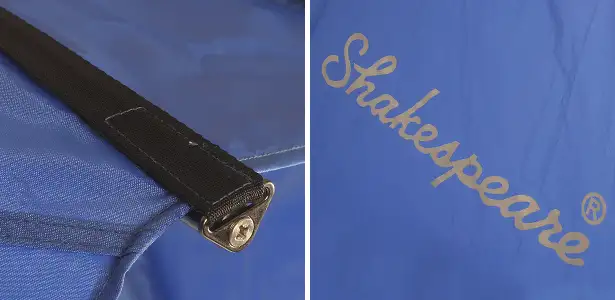
Pegs - Yes Carry bag - Yes Weight: 6lb 7oz SSP: £59.99
Buy The Shakespeare Salt XT Beach Shelter

Imax Storm Safe Beach Shelter The Imax Storm Safe has a domed shape, which allows a touch more headroom. The shelter is secured by piling sand or shingle onto the base flaps to make it stable in even the worst of conditions. It’s quite a roomy design and can fit two inside at a push.
Roll-back doors provide additional protection, while the grey-and-orange Imax colours give the Storm Safe a distinctive look without being too garish. It’s a very solid shelter but surprisingly light in weight for its size. It’s reasonably quick to set up, but has some unique features that will benefit from familiarity.

Pegs - Yes Carry bag - Yes Weight: 6lb 7oz SSP: £99.98
Buy The Imax Storm Safe Beach Shelter

Advanta Protector Beach Shelter Totally waterproof and windproof the Advanta Protector Beach Shelter has been designed to fold down for easy transport and storage. The shelter provides a large amount of space with room for a seat box or chair. Suitable for locating on shingle or sand, the extended skirt can be buried or weighted down for extra stability and protection.
Designed to be quick to erect with a strong aluminium frame, its very stable in bad weather. This shelter is very easy to put up, but I'd recommend just having a quick practice go at home to get the sequence sorted, to ensure when you are on the beach you can do it in a matter of seconds.

Pegs - No Carry bag - Yes Weight - 8lb 8oz SSP: £54.99
Buy The Advanta Protector Beach Shelter
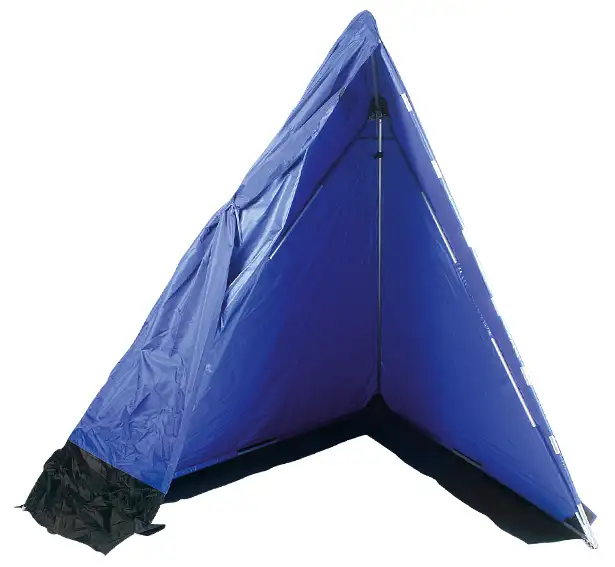
Ian Golds Bigloo This shelter is the big brother of the successful Ian Golds Igloo, and, as the name suggests, it really is big. Comfortably the biggest in this test, it’s also the heaviest by half a pound. The original Igloo was renowned for being generously proportioned, but the Bigloo has two-and-a-half square metres of floor space, although it is laid out in a different manner. However, this is a very tall shelter and most adults will be able to stand up in it.
Unlike some shelters, the Bigloo doesn’t come with a carry bag. Instead, its skirts are secured by straps to keep the package reasonably compact for transportation, although it doesn’t fold down as small as the other shelters do. The Bigloo also has a door for increased protection from the elements, making it a good overnight choice in winter conditions.
For its size the shelter is reasonably quick to put up, helped by the long support poles being one-piece. However, you can’t put it up quite as quickly as you can the original Igloo, because with this one you have a door to contend with.
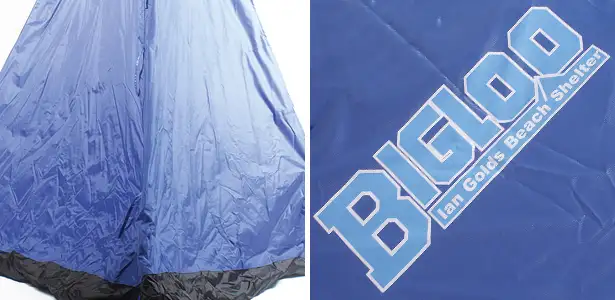
Pegs - Yes Carry bag - No Weight: 10lb 10oz SSP: £139.99
Buy The Ian Golds Bigloo

Daiwa Sandstorm Beach Shelter This distinctive, bright-yellow shelter is designed to be quick to put up. Generous security flaps will take lots of ballast to hold the shelter down, and the flaps also feature eyelets so that the supplied pegs can be used as well.
The Sandstorm shelter is wide enough to accommodate two adults, and a flat roof design means that it’s easy to keep an eye on your rods. The lightest shelter in the selection by just 1oz, the Sandstorm is open-fronted and doesn’t have door flaps. However, it packs down very small for transportation and comes in a bright-yellow carry bag.
Very similar in design to the Shakespeare Salt shelter, this was similarly quick to put up, losing out only by the shortest of margins. However, The Sandstorm was assembled before the Salt, and familiarity could have increased speed on the Salt on what amounted to a second run.
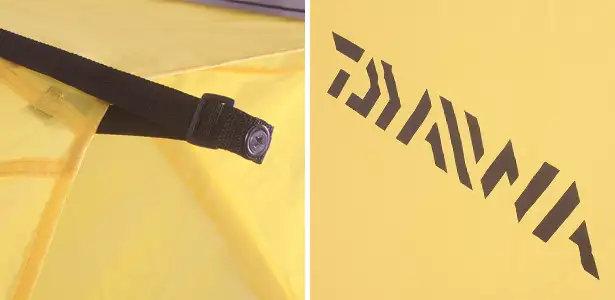
Pegs - Yes Carry bag - Yes Weight: 6lb 6oz SSP: £69.99
Buy The Daiwa Sandstorm Beach Shelter
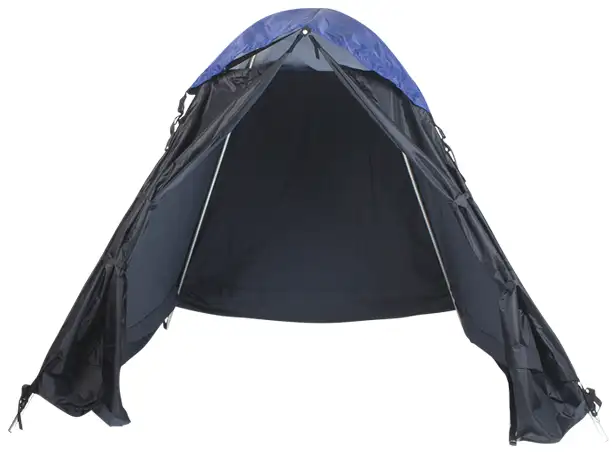
Sundridge Beach Buddy Convertible The Beach Buddy Convertible shares many of the features of the original, and highly rated Holden Beach Buddy, but includes some new innovations. The Convertible has the same Beach Buddy profile but now has stronger ‘shingle’ flaps to hold it down. The dome is detachable so the Convertible can also be used as a simple ‘windbreak’.
To make it easier to transport, the legs are now two-piece so that it can be folded into a more compact package, although the legs can be left connected and the shelter can be carried in a faster-to-assemble mode.
This remains a good, solidly built shelter, tipping the scales at 8lb 7oz but feeling lighter when stowed as a compact package. This shelter was slower to put up from scratch, because the legs needed to be assembled and the dome added, although with the legs left in assembled mode, the process will be quicker.
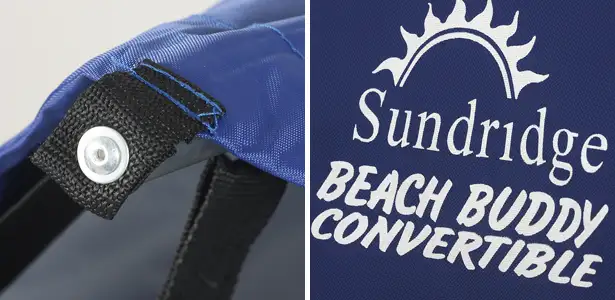
Pegs - Yes Carry bag - No Weight: 8lb 7oz SSP: £89.99
Buy The Beach Buddy Convertible




